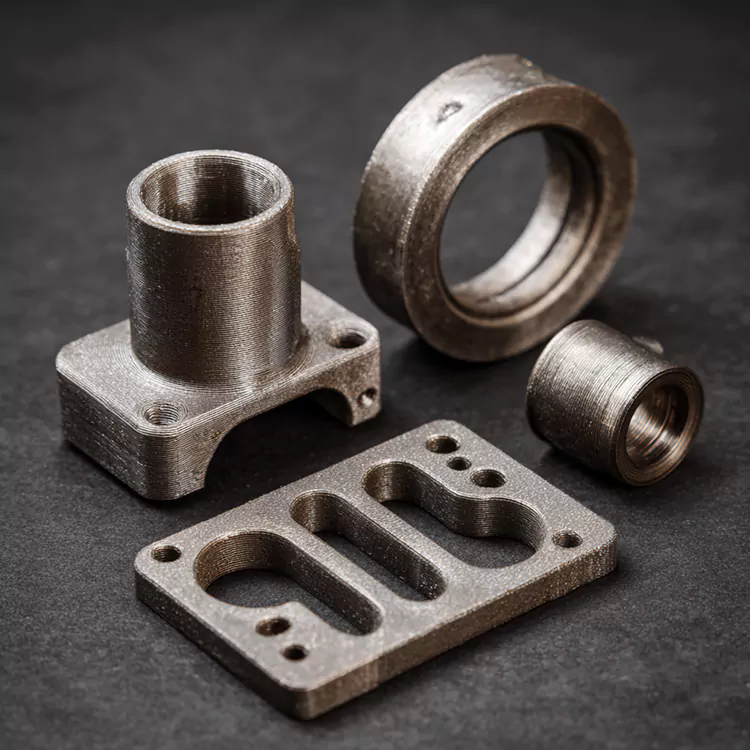Why Is Rapid Prototyping Transforming Product Development?
2025-11-24
Rapid prototyping refers to a collection of advanced manufacturing techniques that allow product teams to create physical models swiftly from digital designs. Its role has shifted from being a supplementary step in development to becoming a core driver of innovation, enabling faster iteration, higher precision, and reduced costs. The central focus of this article is to explore what rapid prototyping is, why it is reshaping global manufacturing, how businesses can benefit from its capabilities, and what technical parameters should guide the selection of a high-performance rapid prototyping service.
Demand for rapid prototyping continues to rise as companies pursue shorter development cycles, deeper customization, and reliable validation before mass production. Whether used in automotive systems, industrial machinery, consumer electronics, or medical devices, rapid prototyping provides enhanced design freedom and functional verification. To support high-quality engineering outcomes, attention to material behavior, tolerances, structural performance, surface finish, and dimensional stability remains essential.
Below is a simplified, professional parameter overview commonly referenced in rapid prototyping service evaluation:
| Parameter Type | Typical Options / Ranges | Description |
|---|---|---|
| Material Compatibility | Plastics (ABS, PC, Nylon, PP), Metals (Aluminum, Stainless Steel, Titanium), Resin | Determines mechanical strength, temperature resistance, and surface finish |
| Dimensional Tolerance | ±0.05–0.15 mm depending on process | Accuracy required for fitment testing and engineering validation |
| Surface Finish (Ra) | 0.8–3.2 μm depending on method | Affects appearance, contact quality, and downstream finishing |
| Build Volume | Up to 1000 × 800 × 600 mm | Defines the maximum size of a single-piece prototype |
| Process Options | CNC machining, SLA, SLS, FDM, MJF, Vacuum Casting, Metal Printing | Determines speed, precision, material performance, and cost |
| Lead Time | 1–7 days depending on complexity | Influences development timelines and iteration cycles |
These parameters guide product engineers in selecting the most suitable method to achieve structural integrity, functional realism, and accurate form evaluation.
What Advantages Does Rapid Prototyping Offer Across Industries?
Companies increasingly rely on rapid prototyping because it allows them to accelerate innovation while controlling risk. The primary advantages include speed, precision, flexibility, and actionable validation at every development stage. The following points break down why rapid prototyping has become indispensable:
Accelerated Design Cycles
Rapid prototyping compresses development timelines by enabling teams to transition directly from digital models to physical parts. Instead of waiting weeks for tooling, product iterations can be produced within days. This speed drastically improves feedback loops and supports real-time design evolution.
Cost Control Throughout Development
Traditional manufacturing requires tooling, molds, or complex machining setups. Rapid prototyping eliminates or minimizes these requirements, allowing teams to explore multiple design ideas without committing to expensive upfront investments. This cost efficiency is particularly valuable during early concept development or when evaluating risky design changes.
Higher Accuracy and Design Validation
With tolerance capabilities as tight as ±0.05 mm, rapid prototyping supports engineers in assessing fit, function, and feasibility. Prototypes can be used for mechanical testing, ergonomic evaluation, aerodynamic studies, thermal assessments, and electrical integrations.
Enhanced Creativity and Freedom of Form
Advanced additive manufacturing enables complex geometries that were previously impossible to achieve through traditional methods. Lattice structures, topology-optimized models, internal channels, and lightweighted designs reflect engineering freedom that supports high-performance products across industries.
Improved Communication Across Teams
Physical models provide a common reference point for engineering, marketing, and production teams. Instead of relying solely on CAD visuals, stakeholders can examine an object, refine features, negotiate dimensions, and align expectations clearly. This tangible communication boosts decision efficiency and project clarity.
Versatility Across Materials and Applications
Whether a prototype requires rigid strength, elasticity, transparency, high heat resistance, metal durability, or specific surface textures, rapid prototyping can accommodate a wide range of materials and processes. This versatility positions it as a multi-industry solution.
From consumer electronics to aerospace, automotive interiors to medical implants, rapid prototyping consistently delivers precision and performance that supports both creativity and reliability.
How Does Rapid Prototyping Work and What Processes Deliver the Best Results?
Rapid prototyping encompasses multiple technologies, each suitable for different applications. Understanding how these processes work allows businesses to choose the correct method for achieving both functional validation and visual optimization.
CNC Machining
CNC machining delivers outstanding precision using subtractive manufacturing. It remains a top choice for end-use-grade materials, strong mechanical properties, and smooth surface finishes. Metals and engineering plastics deliver strong testing reliability for structural verification.
SLA (Stereolithography)
SLA printing cures liquid resin using UV lasers, producing highly detailed models ideal for visual prototypes, concept models, and smooth-surface components. It is widely used in medical devices, electronics housings, and product presentation samples.
SLS (Selective Laser Sintering)
SLS builds parts using powdered materials fused layer by layer. Nylon-based SLS components deliver exceptional durability, impact resistance, and thermal stability. This makes SLS one of the best options for functional prototypes.
FDM (Fused Deposition Modeling)
FDM offers cost-efficient prototypes for basic form and fit. While not as precise as SLA or SLS, it remains useful for larger components or rough mechanical evaluations. Its value lies in affordability and material availability.
MJF (Multi Jet Fusion)
MJF enhances SLS performance with higher density, better surface uniformity, and faster print times. These parts are used in both prototyping and production-grade applications.
Metal 3D Printing
Metal printing processes such as SLM and DMLS create high-performance prototypes in aluminum, titanium, and stainless steel. These components are ideal for aerospace-grade strength, thermal tolerance, and reduced weight.
Vacuum Casting
Vacuum casting reproduces high-quality silicone molds to create urethane parts with the look and feel of injection-molded plastics. It supports low-volume production and detailed consumer product testing.
Each method plays a key role in creating rapid, reliable samples. Choosing the right process depends on application demands—such as strength, flexibility, precision, temperature resistance, or aesthetic requirements.
What Future Trends Will Shape the Evolution of Rapid Prototyping?
Rapid prototyping continues to evolve rapidly, supported by global advancements in automation, intelligent manufacturing systems, and material science. The future direction of rapid prototyping highlights continued efficiency, improved performance, and wider industry adoption.
Integration with Smart Manufacturing
AI-driven optimization tools, generative design, and real-time monitoring systems increasingly guide prototype creation. Manufacturers benefit from enhanced predictive capability, operational consistency, and minimized waste.
New High-Strength Materials
Material science continues to expand the portfolio of resins, engineering plastics, high-temperature polymers, and metal powders. These advancements bring prototypes closer to production-level functionality and broaden application potential.
Increased Customization Across Markets
As customization becomes an industry expectation, rapid prototyping will support product diversification without significant investment increases. From wearable devices and medical equipment to automotive interiors and home appliances, customized structures become more accessible.
Scalability Toward End-Use Production
An increasing number of businesses now transition prototypes directly into small-batch manufacturing. With technologies like MJF and SLS enabling durable components, rapid prototyping increasingly overlaps with short-run production, creating hybrid development models.
Sustainability and Lower Carbon Footprint
Energy-efficient machines, recyclable materials, and reduced tooling contribute to cleaner production processes. Manufacturers embrace rapid prototyping as a path toward waste reduction and resource efficiency.
As rapid prototyping matures, it becomes not just a development tool but a strategic advantage across global industries.
Common Questions About Rapid Prototyping
Q1: What is the most important factor when choosing a rapid prototyping process?
A: The primary factor is the purpose of the prototype. If the goal is structural testing or mechanical validation, CNC machining, SLS, or metal printing may be required. For visual models, SLA or vacuum casting offers superior finish. Material properties, precision needs, lead times, and budget also influence the process selection.
Q2: How accurate are rapid prototyping services?
A: Accuracy depends on the chosen method. High-precision CNC machining can achieve tolerances as tight as ±0.05 mm, while SLA offers detailed surfaces with fine resolution. SLS and MJF deliver robust functional prototypes with reliable dimensional consistency. Proper design preparation and post-processing further enhance accuracy.
Why Businesses Choose Honmor for Advanced Rapid Prototyping Services
The ongoing evolution of global manufacturing requires rapid, precise, and reliable development solutions. Rapid prototyping meets these demands by accelerating innovation, reducing cost, and enabling thorough design validation. From concept evaluation to functional performance testing, rapid prototyping remains a crucial advantage for companies seeking efficiency and competitive strength.
Honmor offers comprehensive rapid prototyping capabilities with advanced equipment, strict quality control, and diverse material options. The focus remains on delivering accurate, high-performance prototypes that support engineering teams across industries. Whether for early-stage concept models, functional testing components, or pre-production verification, Honmor ensures dependable results with short lead times and professional technical support.
For customized consultation, technical evaluation, or project inquiries, contact us to explore how Honmor can support your next innovation.



